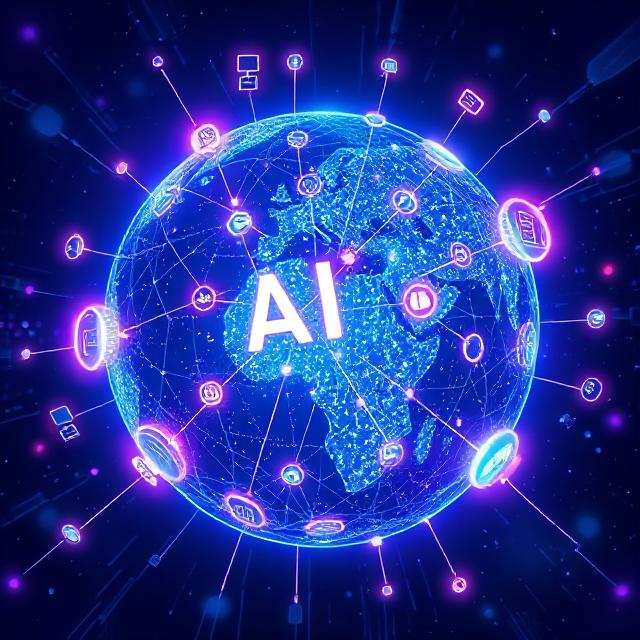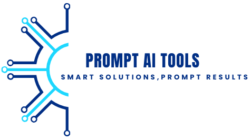Open-Source AI Models – Democratizing AI Innovation
By: Prompt AI Tools | Published: August 2025
Introduction
Open source AI models have become a major driving force behind the rapid evolution of artificial intelligence (AI), one of the most exciting technological advancements in recent years. These models are designed to be freely available to anyone interested, from researchers and developers to businesses and hobbyists. By removing traditional barriers, open-source AI models empower people around the world to build, innovate, and deploy AI applications without needing huge budgets or exclusive access to proprietary technologies.
By fostering collaboration and transparency, open source AI Models is helping to create a more inclusive and diverse AI ecosystem. Whether it’s natural language processing, computer vision, or generative AI, these models are pushing the boundaries of what’s possible while encouraging ethical and responsible AI development.
What Are Open Source AI Models?

Open source AI models are artificial intelligence algorithms and architectures whose code, design, and often training data are made publicly available. This means anyone can download, study, modify, and redistribute these models without restrictive licenses. The open-source philosophy promotes sharing knowledge and tools to accelerate the advancement of AI technology globally.
Unlike closed-source or proprietary AI systems developed by companies like OpenAI or Google, open-source models invite collaboration from a broad community. This helps spot errors, improve performance, and create diverse versions adapted to specialized needs. The availability of open-source models is also invaluable for educational purposes, allowing students and newcomers to experiment with real AI technologies firsthand.
Why Open-Source AI Matters
Open source AI models play a crucial role in the AI landscape for several reasons:
- Accelerates Innovation: With open access, developers can build on each other’s work instead of starting from scratch. This rapid iteration speeds up breakthroughs and helps AI progress faster than ever.
- Promotes Transparency and Trust: Publicly accessible code lets researchers audit models for biases, security vulnerabilities, or ethical concerns. This transparency is essential for building trust in AI systems.
- Enables Customization: Different industries or applications have unique requirements. Open-source models allow tailoring to specific tasks, languages, or regions, which proprietary models might not support.
- Fosters a Collaborative Community: Open projects bring together people from academia, industry, and enthusiasts, promoting shared learning and support.
- Lowers Barriers to Entry: By eliminating licensing fees and restrictions, open-source AI democratizes access to powerful AI tools, especially benefiting startups, educational institutions, and developers in under-resourced regions.
This democratization is reshaping the AI ecosystem , making it more vibrant, diverse, and inclusive. https://ised-isde.canada.ca/site/ised/en/artificial-intelligence-ecosystem
Popular Open Source AI Models and Platforms
Several open-source AI models and platforms have gained popularity due to their versatility, performance, and strong community support. Here are some notable examples:
- Hugging Face Transformers: A comprehensive library offering pre-trained models for a wide range of natural language processing (NLP) tasks such as translation, summarization, and question answering. Hugging Face has become the go-to hub for developers working on NLP.
- Stable Diffusion: A revolutionary open-source text-to-image generation model that enables artists and creators to produce high-quality images from text prompts. It has unlocked new possibilities for creative AI applications.
- GPT-Neo and GPT-J: Open implementations inspired by OpenAI’s GPT series, these models provide powerful language generation capabilities without the restrictions of proprietary licenses.
- TensorFlow and PyTorch: While technically frameworks rather than models, these open-source libraries are the foundation for building and training AI models. Their large communities contribute pre-built models, tools, and tutorials.
These projects highlight the strength and diversity of the open-source AI ecosystem, with continuous contributions driving the field forward.
Challenges and Considerations
Despite the many advantages, open-source AI models also come with challenges that users and developers should be aware of:
- Quality and Reliability: Not all open-source models are equally mature or well-maintained. Users need to evaluate models carefully to ensure they meet performance and safety standards.
- Computational Resources: Training or fine-tuning large AI models requires significant computing power, often beyond the reach of individual developers without access to cloud resources.
- Security Risks: Open code can potentially be exploited or misused by bad actors if not properly monitored and controlled.
- Ethical Concerns: Without strong governance, open models might propagate biases or generate harmful content. Responsible use and continuous auditing are essential.
Navigating these challenges requires collaboration between developers, researchers, and policymakers to ensure open-source AI remains a force for good.
Future Trends in Open-Source AI: What’s Next?

The open-source AI landscape continues to evolve rapidly, with exciting developments on the horizon that promise to further transform the field. Here are some key trends to watch:
- Open AI Model Marketplaces: Expect to see dedicated platforms where developers and organizations can share, buy, and sell pre-trained AI models. These marketplaces will streamline access and foster a vibrant ecosystem of AI tools tailored to diverse needs.
- Decentralized AI Training: Leveraging blockchain and peer-to-peer networks, decentralized training will allow collaborative AI model development without reliance on centralized cloud providers. This could lower costs, improve privacy, and empower wider participation.
- AI Model Interoperability Standards: As the number of open-source models grows, standardized protocols will emerge to enable seamless integration and communication between different AI systems, enhancing versatility and multi-model applications.
- More Focus on Responsible AI Tooling: New open-source toolkits designed specifically for auditing, bias detection, and explainability will become more common, helping users build trustworthy AI systems.
- Edge AI and Lightweight Models: The push towards efficient AI models that can run on edge devices like smartphones or IoT gadgets will accelerate, making AI more accessible and privacy-friendly.
These trends suggest a future where open-source AI not only remains central to innovation but also becomes more democratized, secure, and responsible. Staying engaged with this community will be key for anyone looking to leverage the latest AI advancements.
Conclusion
Open-source AI models are democratizing access to powerful artificial intelligence technologies, accelerating innovation, and fostering a collaborative global community. They allow anyone—from students and startups to large organizations—to participate in shaping the future of AI.
While challenges like resource demands and ethical concerns exist, the benefits of transparency, customization, and collective progress make open-source AI a cornerstone of the AI revolution. Exploring and contributing to these models not only helps grow your skills but also supports building a more inclusive, trustworthy, and innovative AI ecosystem.
Whether you’re a developer, researcher, or enthusiast, open-source AI offers exciting opportunities to learn, create, and make an impact.



